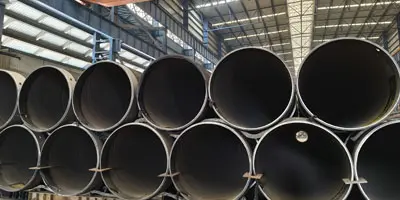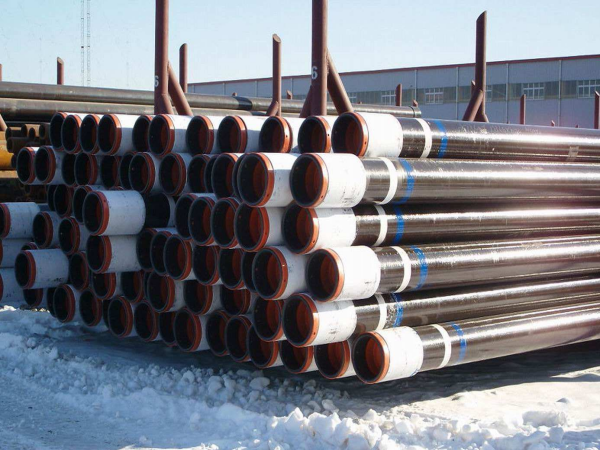In oil and gas drilling, casing pipe is a key component to ensure wellbore stability and safety. N-80 and L-80 are common steel grades under the
API 5CT standard. Although they are similar in appearance, there are significant differences in chemical composition, mechanical properties, and applicable scenarios. Understanding these differences is critical to selecting the appropriate casing to meet specific service requirements.The following Materials are available for the Casing: H-40, J-55, K-55, N-80, L-80, C-90, T-95, P-110, Q-125 that meet API 5ct standards. These include seamless and welded casing for Oil and Gas transportation. Do you know the Difference between APT 5CT N-80 casing pipe and API 5CT L-80 casing pipe?
N80 casing pipe instructions
N80 steel casing is an important tool for oil well
drilling (other important tools include
drill pipes, core barrels, casing pipes,
drill collars, small-size steel pipes used for drilling, etc.). The casing is made of N80 grade steel. It is used to reinforce well walls. It is also the tunnel that carries oil from underground to the surface. This product is a completion tool used after the drilling process and before well cementing.
API 5CT L80 Casing pipe
API 5CT L80 oil casing pipe refers to the second group of steel grades that meet the requirements of API 5CT. It comes in 3 designs, L80-13CR, l80-1 and l80-9cr. The last two groups undergo an air quenching procedure. Manufactured to API Specification 5CT. This is a controlled yield strength material that requires hardness testing. L80 is typically used in wells with sour (H2S) environments. API 5CT L80 oil casing is the lifeline for maintaining oil well operations. The geological conditions are diverse and the underground dynamics are complex and disorderly. Pipes are subject to a variety of forces such as tension, pressure, bending and torsion. In this case, the casing pipe must be of excellent quality. Once a failure occurs, it will inevitably lead to catastrophic consequences such as production interruption or well termination.
Differences between N-80 and L-80 casing pipe
heat treatment
PSL1 requirements: N80 and L80 have the same method (both can be delivered in rolls);
PSL2 requirements: N80 and L80 products should be normalized as a whole or normalized and tempered. If they are thicker, they should be normalized or normalized and tempered after thickening.
Tensile test
N80: yield strength 379MPa~552MPa; tensile strength ≥517MPa; minimum elongation of N80 is 19%. L80: Yield strength 379MPa~552MPa; Tensile strength
≥655MPa; the minimum elongation of L80 is 15%.
Impact test
N80 and L80 must undergo impact testing. The minimum lateral impact energy of the sample is 20J, and the minimum longitudinal impact energy of the full-size sample is 27J.
Wall thickness detection
PSL1: N80 and L80 have no coverage requirements for measuring wall thickness;
PSL2: The wall thickness measurement and recording process for N80 and L80 should preferably cover 25% of the surface area of the entire length of the automatic inspection system.
Non-destructive testing
PSL1: N80 and L80 do not have mandatory requirements for destructive testing of pipes;
PSL2: All pipes of N80 and L80 shall be inspected according to one or more standards specified in 10.15.5 to find whether the inner and outer surfaces of the pipe can receive L4 level longitudinal defects.
Chemical composition comparison
The difference in chemical composition between N-80 and L-80 directly affects their application range. N-80 contains higher levels of carbon and manganese, giving it outstanding strength. In comparison, L-80 has chromium added to some sub-grades, greatly improving corrosion resistance.
L-80's Type 9Cr and Type 13Cr can effectively resist corrosion caused by hydrogen sulfide due to the presence of chromium. This makes it a first choice for wells containing sour gas. The N-80 lacks this feature and its range of use is relatively limited.
Mechanical property differences
Although the minimum tensile strength and yield strength requirements for N-80 and L-80 casing are the same, the heat treatment process causes them to differ in toughness and flexibility. The normalizing treatment of N-80 makes it stable under standard working conditions, while the quenching and tempering process of L-80 significantly improves its durability under extreme conditions.
L-80 casing has stronger toughness and is especially suitable for well conditions with high stress or corrosive substances. Its reliability in complex environments makes it an indispensable choice during drilling.
5CT grade N80-1, in the normalized delivery state or the final rolling temperature is higher than the critical temperature Ar3 and the tension is reduced after air cooling, can be used for hot rolling and normalizing without impact and Non-destructive testing; 5CT grade N80Q must be quenched and tempered (quenched and tempered) ) Heat treatment and impact should comply with the regulations of API 5CT, and non-destructive inspection should be carried out.
API 5CT grade l80 tubing is commonly used in Oil Wells in sour (hydrogen sulfide) environments. It can be divided into 5CT grade L80-1, 5CT grade L80-9Cr and 5CT grade L80-13Cr. Their mechanical properties and delivery condition are identical. The differences are in usage, difficulty of production and Price. 5CT L80-1 pipe is an ordinary type, while 5CT L80-9Cr and L80-13Cr are highly corrosion-resistant oil pipes, which are difficult to produce and expensive, and are usually used in heavily corroded wells.
Application scenarios
N-80 casing is typically used in non-corrosive or slightly corrosive well conditions. It performs well at moderate pressures and temperatures and is widely used in general drilling operations due to its lower cost.
In contrast, L-80 casing pipe is more suitable for sour gas wells, high-pressure wells and wells containing corrosive fluids. Its excellent performance ensures long-term reliability in harsh environments. Despite its higher price, the L-80's longevity and superior performance provide it with better value for money.
cost comparison
One significant difference between N-80 and L-80 casing is cost. The production process of L-80 includes quenching and tempering processes, which increases production costs. In addition, the addition of chromium in some of its sub-grades further increases material costs.
N-80 is the first choice for projects that do not require high corrosion resistance due to its affordability. Although the L-80 is more expensive, its excellent performance in harsh environments and extended service life make it a higher value.
Summarize
When selecting N-80 or L-80 casing pipe, the specific needs of the well situation should be evaluated. N-80 is suitable for normal well conditions, with balanced performance and low cost; L-80 is an ideal choice for extreme environments with its enhanced corrosion resistance and mechanical strength.
By fully understanding the differences between the two, drilling operations can ensure optimal performance and cost-effectiveness. Correct selection of casing can not only improve wellbore integrity, but also effectively reduce operational risks, ensuring the success of the entire project.






 English
English Español
Español بالعربية
بالعربية











 Phone :
Phone :  Whatsapp :
Whatsapp :  Email :
Email : 


